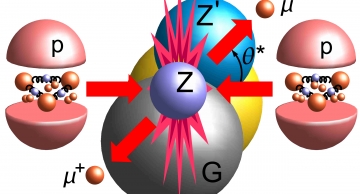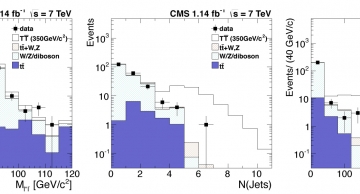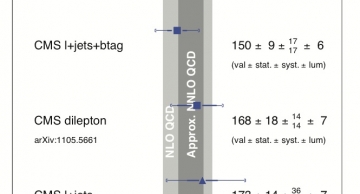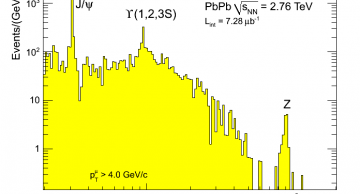This result is not a sprint, it is a marathon. How the teams behind the measurement of the W-boson mass at the CMS experiment found working on this result, almost a decade in the making.
Precision measurements like that of the mass of the W boson…
The source of energy for most of the life on our planet originates from proton-proton collisions at the core of the Sun, which occur at an energy (or temperature) about a billion times less than the collision energy of the LHC. Due to emission of…
Read the paper: EXO-11-005
In this Letter, CMS describes a search for a kind of fourth-generation T quark with charge 2/3. The search for T-antiT pairs was performed in events that had a pair of oppositely charged leptons (l+l−) as well as an…
Read the paper: TOP-11-003
The measured production rates of Top-antiTop pairs, where one lepton and four jets of particles is observed in the final state, show good agreement with Quantum Chromodynamics (QCD), the theory of the strong interaction.…
The current data from the LHC show an effect which might, or might not, be the first indication of the presence of a Higgs boson. Most of this effect is due to the number of pairs of W bosons which are being produced in proton-proton collisions.
The CMS experiment has made several unique measurements using data from LHC collisions of lead nuclei (PbPb, November 2010) at centre-of-mass energies of 2.76 TeV per nucleon pair.
Phenomena measured for the first time in nucleus-nucleus collisions…
The CMS Collaboration at CERN released a paper today entitled "First Measurement of W+W− Production and Search for Higgs Boson in pp Collisions at √s = 7 TeV". The paper is the first produced by CMS that includes searches for the Higgs boson at the…






